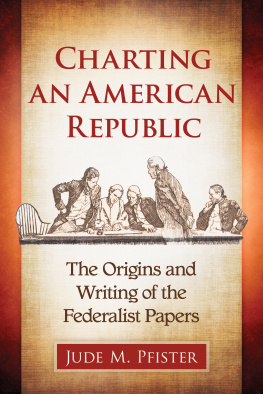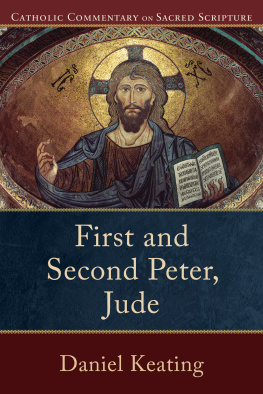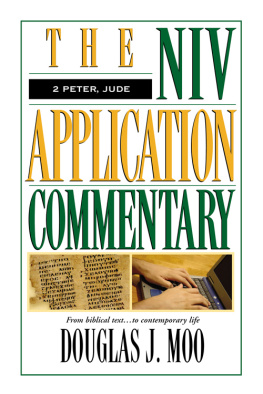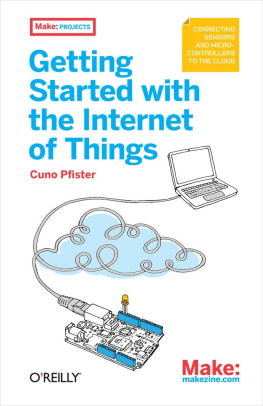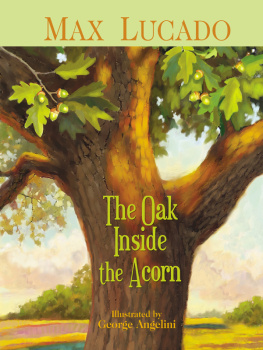Published by The History Press
Charleston, SC 29403
www.historypress.net
Copyright 2015 by Jude M. Pfister
All rights reserved
All images courtesy of Acorn Hall.
First published 2015
e-book edition 2015
ISBN 978.1.62585.163.5
Library of Congress Control Number: 2014959298
print edition ISBN 978.1.62619.631.5
Notice: The information in this book is true and complete to the best of our knowledge. It is offered without guarantee on the part of the author or The History Press. The author and The History Press disclaim all liability in connection with the use of this book.
All rights reserved. No part of this book may be reproduced or transmitted in any form whatsoever without prior written permission from the publisher except in the case of brief quotations embodied in critical articles and reviews.
To my wife, Miriam
CONTENTS
PREFACE
This work was compiled with material found almost exclusively in the archives at Acorn Hall. This was done for several reasons. First, it is the Halls story, and that story should be fashioned as much as possible from the resources at its disposal. Second, every study has to know its limits. In other words, there is no such thing as a definitive history and there is always room for someone to broaden, clarify, enhance and, yes, perhaps even correct the story, and they should be encouraged to do so. While research and writing might be essentially solitary ventures, history is not. It can only shine when others challenge, and expand, its conclusions. With that in mind, it is acknowledged that this study is not the final word on Acorn Hall or Morris County. There is, thankfully, always more.
Acorn Hall did not acquire its name until the late 1850s when Augustus Crane owned the property. Under the propertys first owner, John Schermerhorn, it was simply the Schermerhorn house or mansion. Every effort will be made to distinguish between the Schermerhorn and Crane periods by referring to the dwelling by the name those living there would have used. Each family will be dealt with within the period of their occupancy and within the world they knew, occupied and created.
This book will begin with looking at the architecture and the associated arts that combined to create homes in nineteenth-century America like Acorn Hall. We begin with that topic before moving on to the families who occupied the home because it is such a prominent feature of a place like Acorn Hall that it really demands attention first. The stories of the several individual, yet connected, families to call Acorn Hall home will follow.
ACKNOWLEDGEMENTS
Pride of place for the first acknowledgement belongs to Amy Curry, who, as director of the Morris County Historical Society, has earned her right to headline this section. Her dedication to and knowledge of cultural resource management is inspiring and infectious. Not too far behind Amy in thanks due is Nicole Rizzuto. Nicole is as dedicated as anyone working in the often-lonely field of cultural preservation and research. Richard Porter is also due his share of thanks. Amy, Nicole and Richard have all been more than accommodating to my various questions and needs. The organization that maintains Acorn Hall, the Morris County Historical Society, is likewise due a collective thank-you not just for accommodating me while I worked on this study but also for its devotion to the past.
A posthumous thank-you is due to Mary Crane Hone. Without her vision of cultural preservation that brought about the connection of her ancestral home, Acorn Hall, and the Morris County Historical Society, 68 Morris Avenue would probably look a lot different today. Finally, thanks are due to the dedicated volunteers who help make Acorn Hall such an interesting place to visit through their informative tours and preservation efforts.
As in previous studies, I benefited greatly from the archival collection at the Morristown National Historical Park (NHP), a neighbor museum to Acorn Hall. The Morristown NHP, with its mission of preservation and research, is a proud partner with Acorn Hallas well as other Morristown sitesin the shared mission of preserving and sharing our past. The cultural resources staff at Morristown NHP, Joni Rowe and Sarah Minegar, are in charge of looking after one of the largest research collections in the National Park Service.
Finally, I have had the pleasure of working with The History Press in the past, and I would again like to thank Whitney Tarella Landis, Katie Stitely and all of the staff at The History Press for their professionalism, dedication and good cheer.
INTRODUCTION
Acorn Hall
This book is an organic biography of Acorn Hall and the families it shelteredit was compiled nearly exclusively with resources found at the Hall. This, of course, makes sense. If you wish to write a biography, you go to the source of your subject. After all, who better to tell the story of Acorn Hall than Acorn Hall itself? From that perspective, this book is something of a narrative version of an oral history conducted with the Hall. Every old home has stories and layers of history just waiting to be uncovered; all anyone has to do is askthe subject, animate or otherwise, will always oblige.
Setting the Scene
A Brief Overview of Morris County
This introduction may seem longbut it is necessary. Before the story of Acorn Hall, before Dr. Schermerhorn, before Augustus Crane, before Mary Crane Hone, even before the Morris County Historical Society, Morris County, New Jersey, experienced centuries of history. Indeed, it experienced millennia of history. This pre-history is important to understanding how Acorn Hall was created and evolved over the course of 118 years, from construction in 1853 as a private home to its donation for preservation as a historic site in 1971. Each of these touchstones fills in a larger piece of the puzzle and, in the end, offers us, naturally, what we wantan understanding.
History did not happen in a vacuum. History is not some neatly planned pageant that unfolds ready-made for the benefit of those who would eventually study it. History is a process; it is not a destination. Therefore, to fully appreciate the intricacy, the humanness of how and why events transpired the way they did, we will begin, as is said, at the beginning. We will visit New Jerseys first inhabitants; we will observe how a colony was formed; we will watch a group of rebels become Patriots to forge a new nation. Finally, we will see how Morristown became a fashionable address as the story of Acorn Hall is laid before us as we imagine ourselves on the wide front porch of the Hall on a warm summer evening, perhaps in 1875, listening to a storyteller as the tale unfolds.
Morris County, New Jersey, is situated in the north-central part of the state. It is a county rich in history, lore and stories. It is also a county that, by most standards, is richthat is, wealthy in terms of financial resources. It is a county of contrasts; densely packed neighborhoods (1,070 persons per square mile) compete with lush and inviting open spaces. Morris County is a crossroads county within a state that is often referred to as a crossroads (due to the state lying between two major cities, New York and Philadelphia). While the strategic location of the state is much less important today than it was two hundred years ago, during the American Revolution, its current geography places it pleasantly close enough to, yet far enough away from, all the enticements of one of the worlds principal cities without having to live there.




